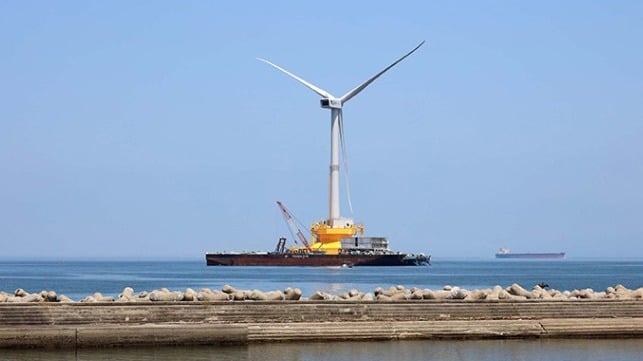Japan Sets Ambitious Targets for Offshore Wind

Japan is jumping in on the global offshore wind explosion with a plan to build 30 to 45 gigawatts of capacity by the year 2040 - more than the world's entire current installed base.
The plan starts with a stepwise target of 10 gigawatts by 2030, and its objective is to achieve cost reductions for bottom-fixed wind power to approximately the same level currently seen for developments in Europe.
The newly-agreed goals put Japan on track to match the ambitions of politicians and wind developers in the EU, Britain, the United States and China, which all plan to install tens (or hundreds) of gigawatts of capacity over the same time frame. Japan aims to achieve net-zero carbon emissions by 2050, in line with the Paris Climate Agreement, and offshore wind power would help it to reach that end.
Public-private agreement
Japan's new targets align with the goals of the Japan Wind Power Association, which called for the same 30-45 gigawatt goal during its last working meeting with Japanese ministers in July.
"Offshore wind power is the core security of the country. We have shown our commitment to climate change countermeasures, new industries for wind power generation, and medium- to long-term introduction targets. It is important to send a message that we will seriously introduce offshore wind power both inside and outside the country," said JWPA CEO Hitoshi Kato in a statement after the first industry-government roundtable.
The promotion of offshore wind checks important boxes for the Japanese government too. Japan is more heavily reliant on imported fuel (coal and LNG) than other large OECD economies, and its nuclear power industry has faced public criticism since the Fukushima nuclear plant disaster in 2011. Building a domestic wind power supply would create local jobs, reduce spending on fuel imports, and cut carbon emissions at the same time, according to a recent report by McKinsey.
Floating future
If Japan is to achieve its full potential for offshore wind power, it will need to develop resources in areas that are too deep for bottom-fixed turbine installations. A generous feed-in tariff (subsidy) of roughly $350 per megawatt-hour - the largest in the world - has not been enough to offset the limited commercial potential and permitting challenges for many of its shallow-water sites.
The majority of Japan's high-potential sites are in deep water, and an auction for the first one is under way now. The tender calls for an installation of 16.8 to 21 gigawatts of power in a specially-designated wind "promotion area" off Goto, Nagasaki. Enabled by new pro-development legislation, it comes with a multi-decade lease - a first for a Japanese offshore wind tender - and approval for the generous feed-in tariff attached. If it attracts a successful bidder and the technology can be scaled up, it will be the largest floating wind installation in the world by a wide margin.
